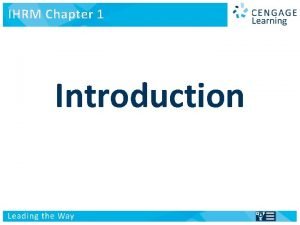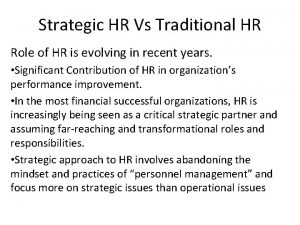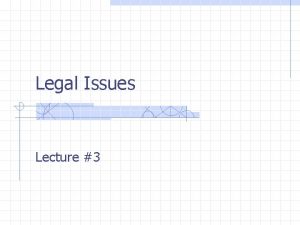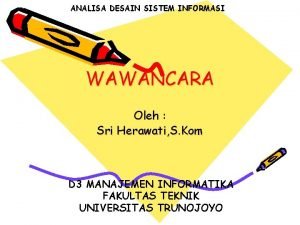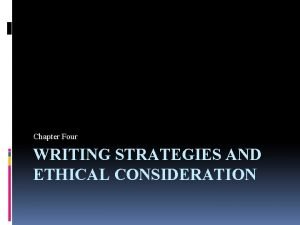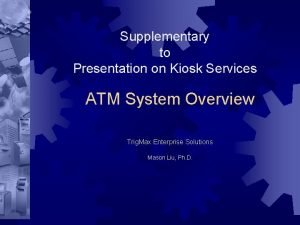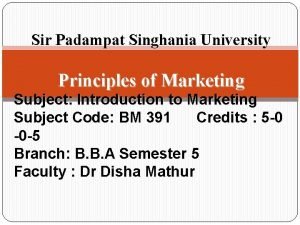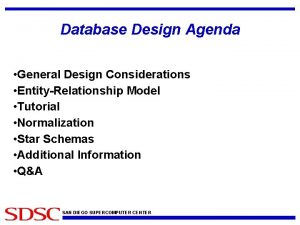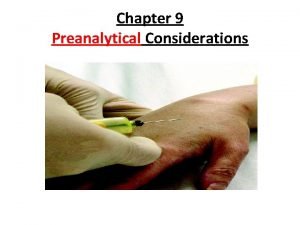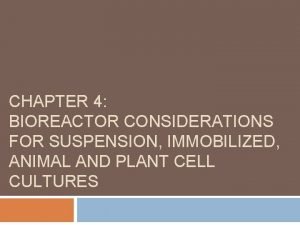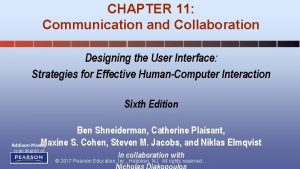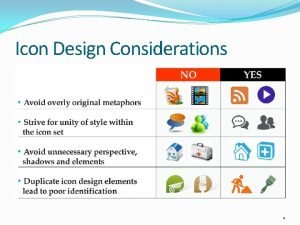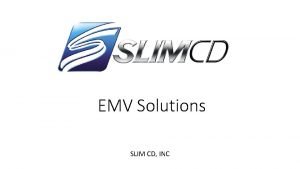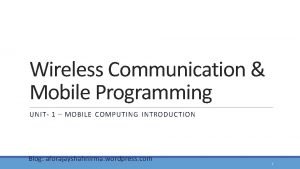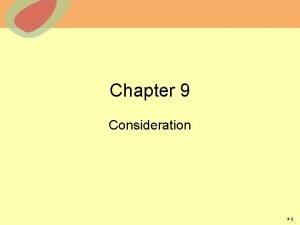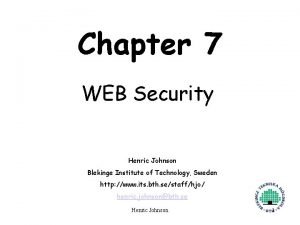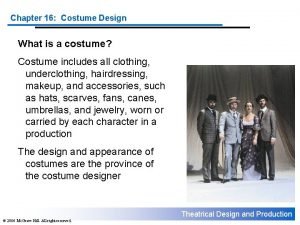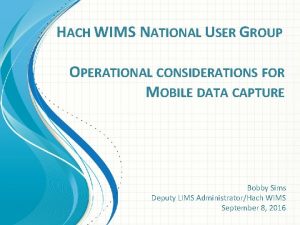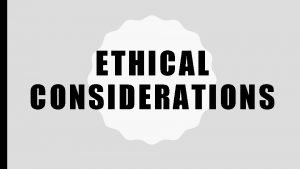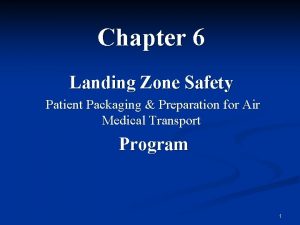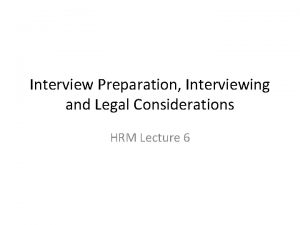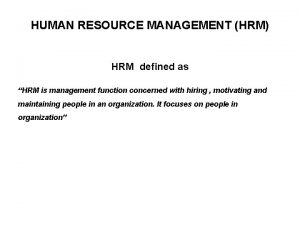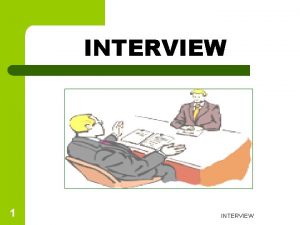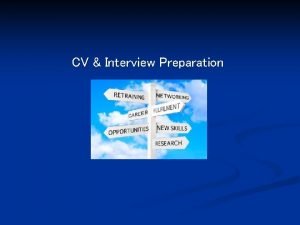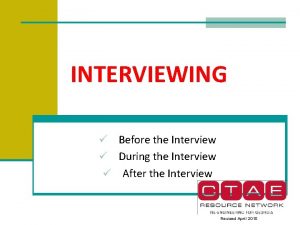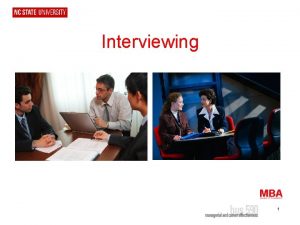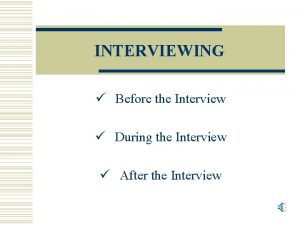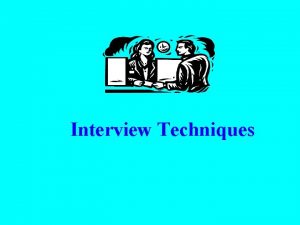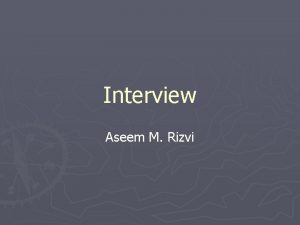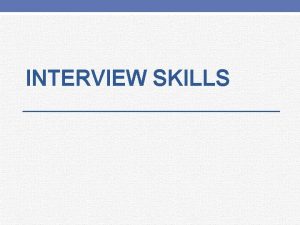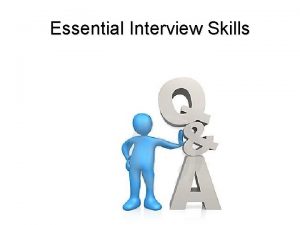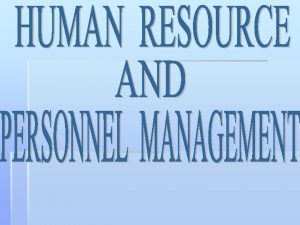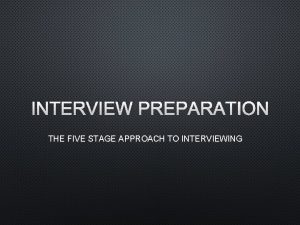Interview Preparation Interviewing and Legal Considerations HRM Lecture






































- Slides: 38

Interview Preparation, Interviewing and Legal Considerations HRM Lecture 9 Part-I

Why Interviews Are Important Interviews: • Give you an opportunity to meet job candidates face-to-face • Help you to assess a candidate’s strengths, weaknesses, and suitability for the job • Provide you with the information you need for making the best hiring decisions

Types of Interviews • • • Initial screening One on one Multiple interviews Selection committee Finalists’ interviews

Develop Interview Questions • Review applications and résumés • Prepare a list of questions • Make sure questions relate to job qualifications • Create open-ended questions • Plan for easy follow-up

Key Questions to Ask • • Specific duties? Typical day? Major accomplishments? Teamwork experience? Knowledge, skills and abilities? Why leaving current job? Salary expectations?

Conduct the Interview • Greet applicants • Introduce yourself and others on the selection committee • Talk about the job and the organization • Focus on qualifications for the job • Avoid stereotyping • Allow silence • Take notes

Interviewing Don’ts • Do not ask discriminatory questions • Do not ask personal questions • Do not allow superficial impressions to influence your decision • Avoid Questioning about: Age Citizenship Disabilities Marital status Military service Religion Non-professional affiliations Personal life such as spouse, children, or financial situation – Arrest records – – – –

Conclude the Interview • Ask for additional questions • Explain notification procedure • Give an expected start date for the job • Describe the next steps • Thank candidates for coming • Escort them to main reception area

Review Your Notes • • Notes should be factual Avoid any opinions or personal biases Include job-related information only Keep notes on file for at least 1 year

Key Points to Remember • Interviews are an essential part of the hiring process • You need to be a skilled interviewer • You must be able to plan, conduct, and evaluate interviews with job candidates • Avoid potentially discriminatory questions and judgments • Call Human Resources if any questions or to ask for help

Civil Rights Act 1964 • Protects several classes of people and pertains so many employment situations including interview • Prohibits discrimination on the basis of race, colour, religion, sex or national origin in all matters of employment from recruitment through discharge

Equal Pay Act of 1963 • Equal pay for men and women • The work must be of comparable skill, effort and responsibility, performed under similar working conditions

Age Discrimination in Employment Act of 1967 • The Age Discrimination in Employment Act of 1967 (ADEA) protects individuals who are 40 years of age or older from employment discrimination based on age. The ADEA’s protections apply to both employees and job applicants. Under the ADEA, it is unlawful to discriminate against a person because of his/her age with respect to any term, condition, or privilege of employment, including hiring, firing, promotion, layoff, compensation, benefits, job assignments, and training. The ADEA permits employers to favor older workers based on age even when doing so adversely affects a younger worker who is 40 or older. • It is also unlawful to retaliate against an individual for opposing employment practices that discriminate based on age or filing an age discrimination charge, testifying, or participating in any way in an investigation, proceeding, or litigation under the ADEA.

Pregnancy Discrimination Act of 1978 • The Pregnancy Discrimination Act (PDA) forbids discrimination based on pregnancy when it comes to any aspect of employment, including hiring, firing, pay, job assignments, promotions, layoff, training, fringe benefits, such as leave and health insurance, and any other term or condition of employment. • Under the PDA, an employer that allows temporarily disabled employees to take disability leave or leave without pay, must allow an employee who is temporarily disabled due to pregnancy to do the same.

Drug-Free Workplace Act of 1988 • Applicability of Drug-Free Workplace Regulations • Certifying A Drug-Free Workplace

Lecture 9 Part-II

• Training The Training Process – Is the process of teaching new employees the basic skills they need to perform their jobs – Is a hallmark of good management – Reduces an employer’s exposure to negligent training liability • Training’s Strategic Context – The aims of firm’s training programs must make sense in terms of the company’s strategic goals. – Training fosters employee learning, which results in enhanced organizational performance.

Five-step Training & Development Process 1. Needs analysis identify specific job performance 2. Instructional design compile training program contents 3. Validation Workout bugs: Grey areas 4. Implement the program training the targeted employee groups 5. Evaluation access the program success

Stages of Training Programs Training should be conducted in a systematic order so as to derive expected benefits from it. The training system involves four stages, namely: a. Assessment of training and development programs needs. b. Designing the training and development programs. c. Implementation of the training program d. Evaluation of the training program


Analyzing Training Needs Analysis Task Analysis: Assessing new employees’ training needs Performance Analysis: Assessing current employees’ training needs

Analyzing Training Needs Task Analysis: Assessing New Employees’ Training Needs A detailed study of a job to identify the specific skills required (Job descriptions and job specification are helpful) Performance Analysis: Assessing Current employees’ Training Needs Verifying that there is a performance deficiency and determining whether that deficiency should be corrected trough training or through some other means (transferring the employees) Performance Appraisal, observations, interview, tests, daily diaries etc

Performance Analysis: Assessing Current Employees’ Training Needs Specialized Software Assessment Center Results Individual Diaries Performance Appraisals Methods for Identifying Training Needs Job-Related Performance Data Attitude Surveys Observations Tests Interviews Can’t-do or Won’t-do?

Training Methods 1. On-the-job training 2. Apprenticeship Training 3. Job instruction Training 4. Programmed Learning 5. Simulated Training 6. Computer Based Training (CBT) 7. Distance & Internet Based Training

On-the-job Training a person to learn a job while working on it Apprenticeship Training A structured process by which people become skilled workers through a combination of classroom instructions and on-the-job training Job Instruction Training (JIT) Listing each job’s basic tasks, along with key points, in order to provide step-by-step training for employees

Programmed Learning A systematic method for teaching job skills involving presenting questions or facts, allowing the person to respond, and giving the learning immediate feedback on the accuracy of his or her answers a self-learning method (text book, PC, Internet) Simulated Training Employees on special off-the-job equipment, as in airplane pilot training, so training cost and hazard can be reduced Simulated equipment they will use on the job Computer Based Training (CBT) Trainee uses interactive computer-based and/or DVD systems to increase his or her knowledge or skills graphics supported lessons

Distance & Internet-Based Training Such training range from paper-and-pencil correspondence courses, to tele-training, videoconferencing, and modern internet-based courses

Management Development

Management Development Any attempt to improve current or future management performance by imparting knowledge, changing attitudes, or increasing skills

Managerial On-the-Job Training 1. Job Rotation 2. Action Learning 3. Case Study Method 4. Management Games 5. Role Playing 6. Outsourced Learning 7. Behaviour Modeling 8. In-house Development Center

Job Rotation A management training techniques that involves moving a trainee from department to broaden his or her experience and identify strong and weak points Action Learning A training technique by which management trainees are allowed to work full-time analyzing and solving problems in other department Case Study Method A development method in which the manager is presented with a written description of an organizational problem to diagnose and solve

Management Game A development technique in which teams of managers compete by making computerized decisions regarding realistic but simulated situations Role Playing A training technique in which trainees act out parts in a realistic management situation Outsourced Learning The outsourcing of companies’ learning functions to major consulting firms

Behaviour Modeling A training technique in which trainees are first shown good management techniques in a film, are asked to play role in a simulated situation, and are then given feedback and praise by supervisor In-house Development Centre A company-based method for exposing prospective managers to realistic exercises to develop improve management skills

Organizational Change

Managing Organizational Change Programs What to Change Strategy Culture Structure Technologies Employees

Managing Organizational Change and Development The Human Resource Manager’s Role Overcoming resistance to change Organizing and leading organizational change Effectively using organizational development practices

Managing Organizational Change and Development Overcoming Resistance to Change: Lewin’s Change Process 1 Unfreezing 2 Moving 3 Refreezing

Thank You
 Mechanical principles of tooth preparation
Mechanical principles of tooth preparation Difference between domestic and international hrm
Difference between domestic and international hrm Traditional hr approach
Traditional hr approach Legal issues in hrm
Legal issues in hrm 01:640:244 lecture notes - lecture 15: plat, idah, farad
01:640:244 lecture notes - lecture 15: plat, idah, farad System design interview preparation
System design interview preparation Formulas for career success interview preparation
Formulas for career success interview preparation Writing strategies and ethical considerations
Writing strategies and ethical considerations Ethical considerations in experimental research
Ethical considerations in experimental research Pricing considerations and approaches
Pricing considerations and approaches Durite
Durite Tax considerations for setting up a new business
Tax considerations for setting up a new business Emv kiosk considerations
Emv kiosk considerations Exchange transaction and relationship in marketing
Exchange transaction and relationship in marketing Mechanical design of transmission line
Mechanical design of transmission line Database design considerations
Database design considerations Compare and contrast first and second language acquisition
Compare and contrast first and second language acquisition Cloud delivery model
Cloud delivery model Basal state blood collection
Basal state blood collection Bioreactor considerations for animal cell culture
Bioreactor considerations for animal cell culture Collaboration design considerations
Collaboration design considerations Anatomical considerations
Anatomical considerations Biopharmaceutic considerations in drug product design
Biopharmaceutic considerations in drug product design Retro mylohyoid curtain
Retro mylohyoid curtain Dogso considerations
Dogso considerations Myharper blackboard
Myharper blackboard Convection pdhpe
Convection pdhpe Spurt and shunt muscles
Spurt and shunt muscles Slim cd inc
Slim cd inc Design considerations for mobile computing
Design considerations for mobile computing Appendix research sample
Appendix research sample Trach collar oxygen flow rates
Trach collar oxygen flow rates Ethical considerations examples
Ethical considerations examples Considerations examples
Considerations examples Web security considerations
Web security considerations What is a costume
What is a costume Operational considerations definition
Operational considerations definition Ethical consideration in research
Ethical consideration in research Azure landing zone considerations
Azure landing zone considerations

